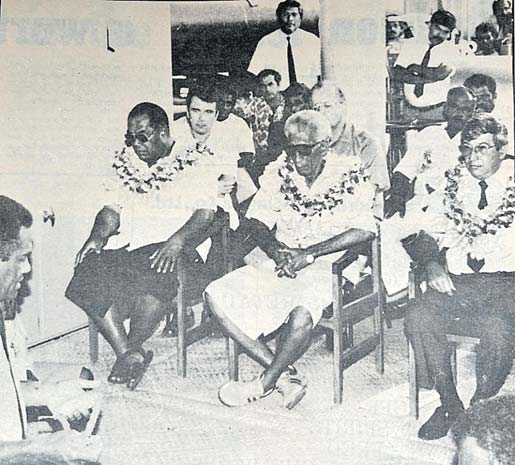In 1988, the Fiji Sugar Corporation achieved another historical dimension to its expansion program with the commissioning of Fiji’s biggest crusher at Labasa Mill, according to an article in The Fiji Times on August 26 that year.
The $1.8million crusher was the first addition to the mill’s crushing system since it was established in 1894 by the Colonial Sugar Refining Company.
Labasa Mill was the country’s third mill to be constructed out of the four existing mills after Penang and Rarawai.
The crusher was bought by FSC from Puna Mills of Hawaii in late 1987 after it was forced to close because of exceptional high production costs.
FSC engineers went to Hawaii in 1987 to dismantle the equipment and it was shipped over to Labasa where it was assembled and put together under their supervision.
The project was part of $42m that had been earmarked by the FSC for the extension of the mill since it took over from the CSR in 1973.
In commissioning the new crusher, FSC’s chairman of the board of directors, Lyle Cupit, said Labasa Mill’s share of capital expenditure of 32 per cent was stable, which reflected the development focus the mill had received.
This was out of $130m the corporation had used in upgrading the four mills over a period of 15 years.
During the period, equipment which had been fitted in the mill complex included the bulk sugar storage and port facilities at Malau, a modern boiler, a completely new feeding station, additional evaporators, pans, condensers and other equipment.
The Malau facilities have enabled the FSC to crush the cane in a season of reasonable length and store and ship the sugar efficiently and economically.
The new crusher is made up of 84-inch rollers, pressure feed rollers, gearings and a 1000hr turbine drive, similar to one of the existing crushers but different in size.
Mr Cupit said the inclusion of the crusher to the system at Labasa was significant in that although it would only make a minor improvement to the throughput, it would make significant impact.
The crusher is designed for the extraction of sugar juice better from bagasse from about the present 5 per cent to between 3.5 and 4 per cent.
It would also provide a safety factor in that if one of the three existing crushers broke down, crushing would continue.
Work on the new crusher started in early March 1988 under the supervision of Sheik Ahmed, an engineer based in the corporation’s head office in Suva and Jack Sinclair of Lautoka Mill.
FSC had a plan to install a similar crusher which had been ordered from Walkers of Australia in the coming slack season to replace the current number three crusher.
Once in place, Labasa would have the largest and most modern milling train out of the country’s sugar mills.
The three existing crushers which were small ones installed in 1894 have been modified a number of times over the years to increase their crushing capacity to meet the increase in cane production.
With the new crusher in place, Labasa Mill could crush 1.2million tonnes of cane in a 30-week season at an average throughput of 400,000 tonnes per week.
Mr Cupit said the decision to install an additional crusher at Labasa mill was a matter of pride for the FSC and the sugar industry.



